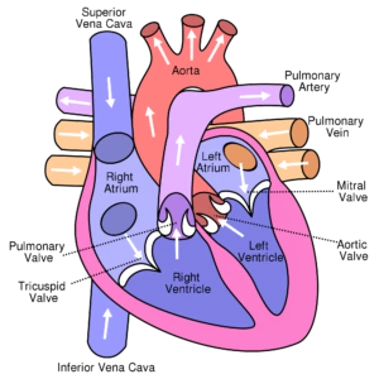Transportation In Human Beings
Transportation in Human Beings
If you were amazed by the beautiful roads that transport cars and bikes, then take a moment to see within yourself. There is this astounding system of veins inside your body that covers a separation of a surprising 100,000 km. These are answerable for the transportation of individuals. Let us investigate.
Circulatory System and its Components
In people, the different organs related with this framework incorporate the heart, lungs, veins, vessels, and blood. The heart is the siphoning organ that squirts out blood. The heart does this with so much weight that it is equipped for squirting blood up to 9 meters high. It never stops and beats ceaselessly with the goal that blood can make a trip to all pieces of the body.
Your blood goes through these veins shipping oxygen, carbon dioxide, processed nourishment, hormones and even waste items. It is stunning to perceive how transportation in individuals is completed by the circulatory framework, with the heart and the huge system of veins.
Blood
Blood is a significant liquid connective tissue. It is essentially made out of plasma and platelets. There are three kinds of platelets, in particular, red platelets, white platelets, and blood platelets. The RBCs have hemoglobin, an iron-containing complex protein. The WBCs are the cells that help in battling ailments and assault any outside bodies in the blood. The blood platelets are the ones that help in coagulating of blood.
In humans, there is a wonder considered twofold flow that happens, which is an effective way. The heart siphons the blood, and through the different veins, it goes to various organs and afterward returns again to the heart. Presently, this progression of blood in people happens in two pathways called the pneumonic pathway and the fundamental pathway.
This framework guarantees that the deoxygenated (blood conveying carbon dioxide) from the correct side of the heart goes to the lungs, where vaporous trade happens. Blood gets loaded up with oxygen from the lungs and carbon dioxide is offered out to the lungs (from where it leaves the body). The oxygenated blood at that point goes from the left half of the heart to every single other piece of the body.
The twofold course observed here guarantees that there is no blending of oxygenated blood and deoxygenated blood. There is likewise a proficient inventory of oxygen to the body cells and a more prominent pace of blood stream in the body.
Heart

How do the oxygenated blood and the deoxygenated blood not get blended? Right off the bat, they travel in various veins. Also, in the heart, there are four chambers. The blood without oxygen and the blood with oxygen stream into various chambers.
The human heart is a solid organ, which has four chambers. The two upper chambers called the right atrium and the left atrium, and the two lower chambers called the right ventricle and left ventricle. The right chamber and the right ventricle together might be known as the right heart. The left chamber with the left ventricle together can be called as the left heart. Every one of the councils of the heart are isolated by solid dividers called septum.
Blood Vessels
Arteris and veins are the main blood vessels. These are interconnected by a system of littler vessels called vessels. Veins convey deoxygenated blood to the correct side of the heart while supply routes divert oxygenated blood from the heart to various pieces of the body.
Lymphatic framework
In individuals and vertebrates, the lymphatic framework goes about as a subsystem of the circulatory framework. It likewise has a task to carry out in the transportation in individuals. Lymph is an extraordinary liquid called the tissue liquid. It assumes a job in the trade procedure of supplements and gases that happens through blood. Any overabundance liquid staying in the cells and tissues is gathered by the lymph and is depleted into the veins, which convey blood.

Similar Questions
Knowledge Check
Human beings are
APlantigradeBDigitigradeCUnguligradeDNone of the aboveHuman beings are
AOmnivorousBHerbivorousCCarnivorousDAutotrophic.Human beings are
AOmnivorousBHerbivorousCCarnivorousDAutotrophic